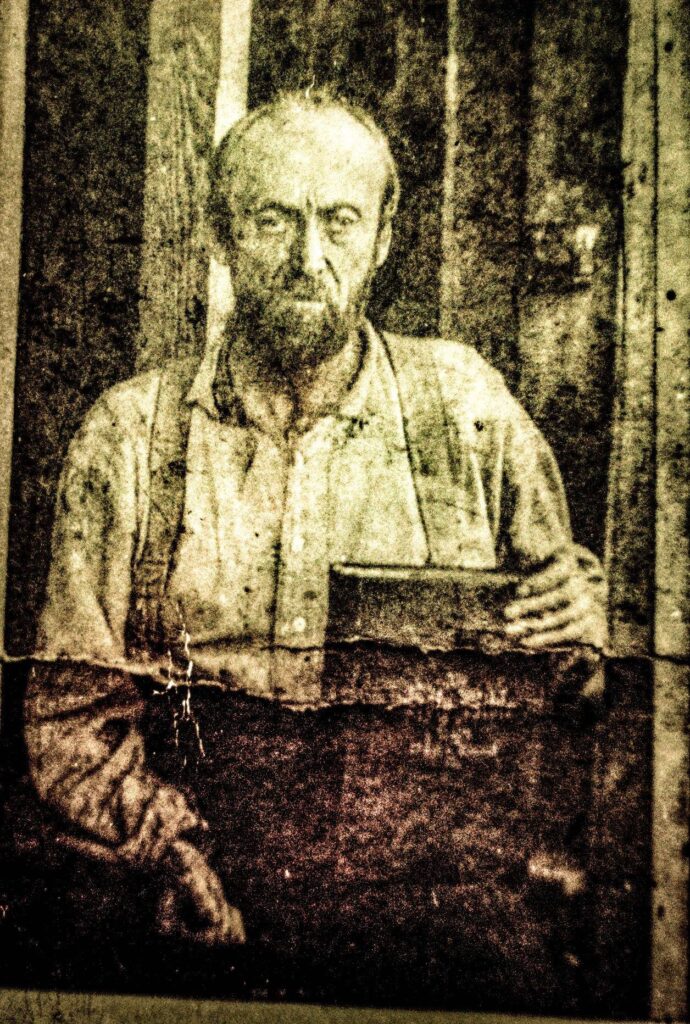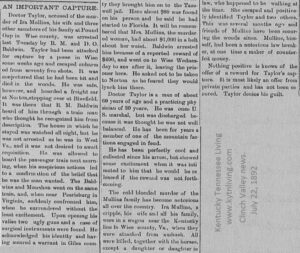
July 22, 1892
There are dozens of telling and re-telling of the story of the Pound Gap or the Killing Rock Massacre. In the beginning, before, during, and after the trial very little official information was ever given to the local population.
In addition, the people of the mountains knew about some rather odd events surrounding the crime. This was thanks to newspaper articles that started appearing shortly after the massacre. They knew that the Letcher/Pike County circuit judge had issued a statement declaring that if Doctor Taylor or the Fleming brothers returned to Kentucky, he would have them hanged without trial or jury.
They also knew that after the indictment naming Taylor, Adams, and the Fleming brothers was issued on June the 3rd several odd events happened before Taylor was captured in July. Henry Adams had turned himself in and was released on bail.
Three Letters
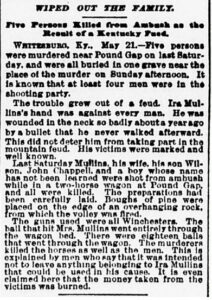
On June the 9th Sheriff Holbrook would receive the first of three letters from Doc Taylor and the Fleming brothers telling him that they were innocent and that they were being framed. They also claimed to be fearful for their lives and offered to turn over states evidence claiming that some prominent individuals were involved in the crime.
What’s more is the fact that they had told the sheriff in the letters where they were, and offered to turn themselves in, IF the sheriff would provide an escort to the county seat. To the people of the area these are not the actions that guilty men would take, and why would a sitting Kentucky Judge threaten these men with death IF they returned to Kentucky?
Failed Arrest Attempt
In every story we could find about the actions of Taylor, Adams, and the Flemings prior to the gunfight which occurred on July 17th they are never described as behaving in a manner one would expect of men on the run. This is also attested to in the transcript of the trial.
Problems with the Trial Transcript
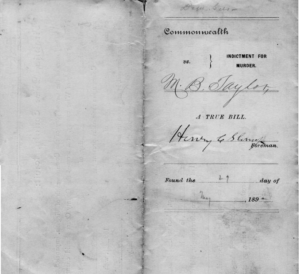
A transcript that would be celebrated by Charles A Johnson in his 1938 book “An illustrated History of Wise County Virginia”. Mr. Johnson is ecstatic that he was able to temporarily get his hands on this transcript. The question becomes why was Mr. Johnson so happy to have quote “…the only existing copy of the transcript…” unquote?
We believe that Mr. Johnson may have answered this question on page 495 of his book. When he asked some questions of his own.
130 Years of Questions
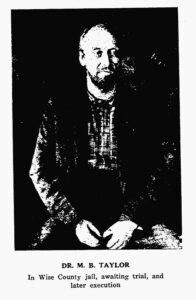
Mr. Johnson asks; “Was the “Red Fox” proven guilty beyond all reasonable doubt of the crime of which he was charged? Was the verdict of the jury rendered against him a just verdict? Was the action of the Supreme Court of Appeals, in refusing the prisoner a new trial and affirming the judgment of the lower court, sound and beyond criticism? There has been much conflict and diversity of opinion among the older class, that has been handed down to the young generation, as to just what the evidence really was on which the jury passed their verdict of guilt”
Frustrations and Inaccurate Information
From these questions we think that in 1938 Charles Johnson was just as frustrated with the conflicting stories and the inaccurate information in them, as we were when we first started researching the Killing Rock massacre in 2012. However, even with the transcript of the trial, Mr. Johnson himself falls victim to false information in his telling of the massacre.
The easiest example of this occurs on page 378 of the book. Near the bottom of the page Mr. Johnson repeats the story of Doc Taylor guarding Talt Hall. In the many re-telling of the story, it is claimed that Doc Taylor abandoned his guard duty during the night. Slipping off in the early Saturday darkness to prepare and commit the massacre later that day. This story is one of the easiest to debunk.
Questions and Inaccuracies
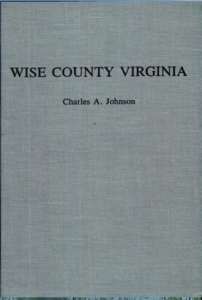
By Charles A. Johnson
Talton Hall was tried in the later part of January 1892 and sent to Lynchburg Virginia to await his appeal in early February. He was returned to the Wise jail in September 1892 while Doc Taylor was awaiting trial. But to be fair to Charles Johnson, even though he had access to certain individuals involved in the trial of Doc Taylor, and the transcript from the trial, he did not have easy access to the types of information we have today.
To be critical of Mr. Johnson, his book is hard to follow, especially in his telling of the events which happened around the Pound Gap Massacre. Instead of following a linear timeline Mr. Johnson jumps around, topic to topic and subject to subject. This is a very odd way in which to write a history book.
Although we have long had access to his book some of it has never been clear. It is only recently that we have gained access to more information, this has helped us to clarify some of the information given to us by Charles Johnson.
This raises some questions about the information that Mr. Johnson gives us, or more to the point the information given to him in his research for his book. He informs us that a couple of the judges and other court officers involved in the case were still alive and interviewed. He laments that none of the lawyers for the defense or other individuals involved in the case were alive and available for interviews as well.
Again, this is highlighted in his own words when he said; “There has been much conflict and diversity of opinion among the older class, that has been handed down to the young generation, as to just what the evidence really was on which the jury passed their verdict of guilt”
Why the Trial is Split Apart
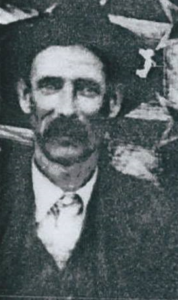
To present the trial of Doctor Marshall Benton Taylor and the evidence that was presented both for and against him will necessitate the need for multiple videos. We intend to present these videos in “Trial Fashion” first giving the evidence for the state then presenting the evidence for the defendant.
However, we must inform you that part of this telling will indeed be fiction. This is because, as Mr. Johnson informs us, at the time of the trial the court reporter recorded everything using shorthand. The custom was to only record the answers given by the witness. This poses a problem not only for us, but for anyone reading the transcript.
Each answer ends and is separated from the next with a semicolon. The reader is left with the task of imagining what the question was that precipitated the answer. Without knowing and understanding this simple fact some statements from the witness seems to combine with the next or previous statement.
This can lead to confusion on the part of the reader. To alleviate some confusion, we will try to fill in the questions. This transcript covers 23 pages in Charles Johnson’s book. For time some of the witness testimony we will present will be abbreviated. This includes topics such as establishing the identity of the witness, where they lived, and other information.
However, with some witnesses such as Jane Mullins and Mat and Sarah Blevins we will present the entire testimony. These videos will probably have the testimony of the single witness.
Final Note
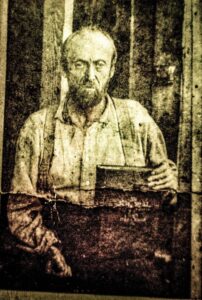
On a final note, we think it is important to inform you that.
This transcript was later typewritten by the court clerk before being sent to the court of appeals. We have discovered that it contains some inaccurate information that we will discuss when we encounter them. We also discovered in this book that a writ of 12 exceptions were supposed to be compiled by the clerk’s office and sent to the appellate court.
We know from other sources that this writ was never received by the appeals court. And that at the time of his book Mr. Johnson informs us that what those exceptions were… has been lost to time, and as of this video have never been found.
Thank You
We thank you for continuing to support Kentucky Tennessee Living. As we bring to you the history of the Appalachian Mountains. We must remind everyone that the story names Killing Rock: The Oft Told Tale (s); Killing Rock: The Untold Story and The Killing Rock Trial are all three under Kentucky Tennessee Living copyright.
Source Information
Clinch Valley News
July 22, 1892
A Narrative History of Wise County, Virginia
By Charles A. Johnson
The Sun New York Times, NYC, NY, May 22, 1892
Copyright and Other Information
All photos are in the public domain unless otherwise noted. This includes photos dated before 1923. All other photos are used with permission or under the education fair use statute of the US copyright law.
Copyright 2022 Kentucky Tennessee Living
kytnliving.com/copyright-2/
Social Media Pages
For more about us, you can visit our Facebook page:
https://www.facebook.com/kytnliving
Our Twitter page:
https://www.twitter.com/KYTNLiving
Our YouTube Channel:
https://www.youtube.com/kytnliving
When we forget our past and who we are as a people, then we become who “they” say we are. ~~ David Sergent
I have attended the University of Kentucky. I have an Associates Degree from Hazard Community College and Technical School. I have also attended the University of Pikeville. I have taken several classes in Journalism as well as in the Appalachian History, Literature, and Sociology during my time at those schools.
I was born in Florida and grew up in Burdine, Kentucky. I have been married to David W. Sergent since May 4, 2013. I have two children and four grandchildren from a previous marriage. I currently live in Tennessee but my hope is to one day come back home to live in the beautiful mountains once more.


